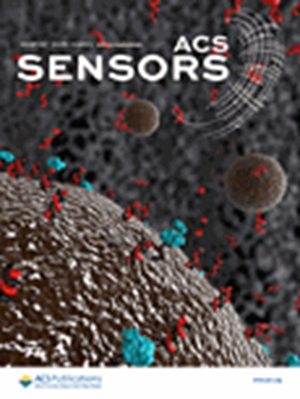On the Blood Components Contributing to the Drift of Electrochemical Aptamer-Based Biosensors.
IF 9.1
1区 化学
Q1 CHEMISTRY, ANALYTICAL
引用次数: 0
Abstract
Electrochemical aptamer-based (EAB) sensors support the high-frequency, real-time measurement of specific molecules, including metabolites, pharmacological agents, and biomarkers, in situ in the living body. A challenge that complicates their long-term, in vivo deployment, however, is signal drift, which causes a reduction in their signal output over time that is unrelated to the presence of target. Previously, we and others have shown that, when placed in undiluted whole blood at body temperature, EAB sensor drift arises predominantly due to fouling and enzymatic degradation of the DNA aptamer, with the former dominating in vitro in days-old bovine blood, and the latter dominating in vivo in blood flowing through the rat jugular. Building on this background, here we explore the specific blood components that prompt the EAB sensor drift in vitro. Comparison of the drift produced by whole blood, washed blood cells, and plasma demonstrates that this drift is caused by blood proteins rather than blood cells. And studies employing size-fractionated serum and plasma indicate that the proteins causing drift are approximately of molecular weight >100 kDa. The latter observation explains past successes in mitigating drift via the use of molecular-weight-selective films.血液成分对电化学适体生物传感器漂移的影响。
基于电化学适配体(EAB)的传感器支持在活体中对特定分子进行高频、实时测量,包括代谢物、药理学药物和生物标志物。然而,使其长期在体内部署复杂化的一个挑战是信号漂移,它会导致信号输出随着时间的推移而减少,这与目标的存在无关。之前,我们和其他人已经证明,当在体温下放置在未稀释的全血中时,EAB传感器漂移主要是由于DNA适体的污染和酶降解引起的,前者在体外数天的牛血液中占主导地位,后者在体内通过大鼠颈静脉流动的血液中占主导地位。在此背景下,我们探索促使EAB传感器在体外漂移的特定血液成分。全血、洗涤血细胞和血浆产生的漂移的比较表明,这种漂移是由血液蛋白而不是血细胞引起的。采用血清和血浆分级研究表明,引起漂移的蛋白质分子量约为100 - 100 kDa。后一种观察解释了过去通过使用分子量选择膜来减轻漂移的成功。
本文章由计算机程序翻译,如有差异,请以英文原文为准。
求助全文
约1分钟内获得全文
求助全文
来源期刊

ACS Sensors
Chemical Engineering-Bioengineering
CiteScore
14.50
自引率
3.40%
发文量
372
期刊介绍:
ACS Sensors is a peer-reviewed research journal that focuses on the dissemination of new and original knowledge in the field of sensor science, particularly those that selectively sense chemical or biological species or processes. The journal covers a broad range of topics, including but not limited to biosensors, chemical sensors, gas sensors, intracellular sensors, single molecule sensors, cell chips, and microfluidic devices. It aims to publish articles that address conceptual advances in sensing technology applicable to various types of analytes or application papers that report on the use of existing sensing concepts in new ways or for new analytes.
 求助内容:
求助内容: 应助结果提醒方式:
应助结果提醒方式:


